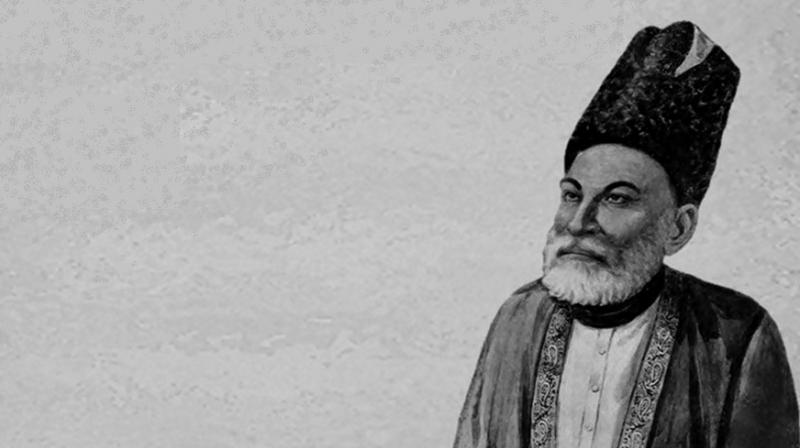Mirza Ghalib: The Iconic Urdu Poet Who Transcended Time
Mirza Ghalib is considered one of the greatest Urdu poets of all time and his poems are widely read and appreciated even today. He was born in Agra in 1797 and was a versatile poet who wrote ghazals, nazms, and rubais with equal ease.
Ghalib was also a prolific letter writer, and many of his letters have been published and widely read. He was a court poet during the reign of the Mughal emperor Bahadur Shah Zafar II, and his poetry reflects his wit, sarcasm, and philosophical musings on love, life, and death.
One of the most distinctive features of Ghalib’s poetry is his use of complex and sophisticated language, which sets him apart from other Urdu poets of his time. He was known for his love of wordplay and his ability to convey deep emotions and philosophical ideas through his poetry.
Despite facing financial difficulties and personal tragedy throughout his life, Ghalib remained dedicated to his craft and continued to write until his death in 1869. Today, Ghalib’s poems are widely studied in South Asia and beyond, and he is regarded as one of the most influential and important poets in the Urdu language.
Mirza Ghalib was a prolific poet and many of his works are widely read and admired. Some of his most famous poems and works include:
- “Divan-e-Ghalib”: This collection of Ghalib’s poetry is considered his magnum opus and is widely regarded as one of the greatest works of Urdu poetry. It includes over 550 ghazals and nazms and reflects Ghalib’s wit, sarcasm, and philosophical musings on love, life, and death.
- “Aahang-e-Ghalib”: This collection of Ghalib’s poetry is considered one of the best and most accessible introductions to his work. It includes a selection of his most famous ghazals and is a great starting point for those who are new to Ghalib’s poetry.
- “Letters of Ghalib”: Ghalib was also a prolific letter writer and many of his letters have been published and widely read. These letters offer a glimpse into Ghalib’s life and his thoughts on a wide range of topics, including politics, society, and his personal life.
- “Rubaiyat-e-Ghalib”: This collection of Ghalib’s rubais (four-line poems) is considered one of the best examples of his mastery of the form. These poems are characterized by their wit and sophistication and reflect Ghalib’s love of wordplay and his ability to convey deep emotions through his poetry.
These works are just a few examples of Ghalib’s famous poems and collections, and his contributions to Urdu poetry and literature continue to be widely recognized and celebrated.

